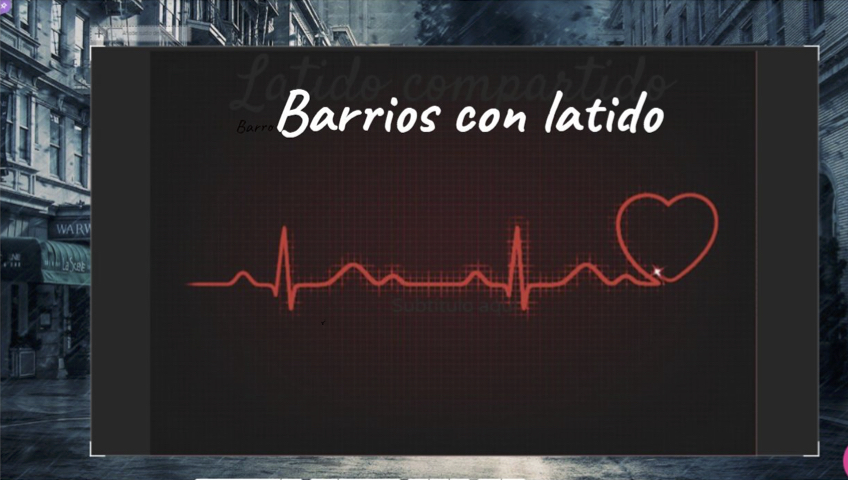The Pedro de Luna school in Zaragoza and the students of the Capacity Development programme are working on a project called ‘Barrios con Latido’ (Neighbourhoods with a heartbeat). The objective of this project is to create emotional ties between teenagers and their neighbourhood.
The project reflects on the weaknesses, threats, strengths and opportunities of the neighbourhoods we live in and of the people, spaces and street furniture that integrate them. The emotional ties that are created with everything around us mean that they become part of our lives and make us aware that we need to take care of them… We want teenagers to become more sensitive to this and be the drivers for change.
Phase 1 : Come up with the project goals
For this part, we counted on the help of CADI (Industrial Design Centre of Aragon). The framework was the result of the ideas that we will tackle long-term and short-term. This is divided into four blocks:
• I give you a moment
• Will you give me a smile?
• I need you to take care of me
• Points of interest and places with possibilities

Phase 2: Implement the ideas
These ideas are translated into activities such as:
A) Meeting members of the community by interviewing citizens, shopkeepers, cleaners… A very enriching activity for our students. Another activity was to ask if they knew certain important spaces in the neighbourhood. 
B) Generational Interchange. We visited ‘La Magdalena’ retirement home. Meeting the residents through a series of interviews was very emotional. There were also various activities carried out, such as drawing and writing Christmas cards. ‘Ni un peluche sin abuelo’ (no plush toy without a grandparent) was one of the activities. Our students brought a very special gift: a cuddly plush toy. There were many pending ideas we have yet to make a reality but there are high hopes.
‘BARRIOS CON LATIDO’ of solidarity
How many times have we heard that young people don’t participate, don’t get involved, don’t show solidarity? So many that we have become discouraged in facing important challenges in society such as justice and equality, overwhelmed by the grandeur of these words. We are better at understanding concrete actions that fight against poverty or discrimination, in a daily, tangible and consistent way.
This is what sparked the motivation to set out the project II Concurso IES Pedro de Luna para proyectos sociales de oenegés (IES Pedro de Luna competition for social projects for NGOs), in Education for Citizenship class. The intention was to make the students more conscious of the inequalities present in our society and our world and show them how many people work to eliminate these inequalities. We also intend to encourage a more collaborative, less self-centred, attitude, so they become more conscious of the importance of their actions.
This project consists of various phases:
1) Fundraising: We gave ourselves the first objective of raising €500 for the competition prize. Initially, all of the students believed this would be impossible. But when they set out to tell the community about their idea, they were surprised to see that a few establishments wanted to collaborate. Another fundraising idea was a flea market, where teachers and students brought books, clothes, plants, jewellery, shoes, bags etc. to be sold. Everyone in the area threw themselves in, buying objects, but above all they were interested because of what the students wanted to achieve. As a result over €600 was raised!

2) Contact with the NGOs: In this phase, the student body learned how an NGO functions and got in contact with them to invite them to participate in the competition.
3) Award the prize: This phase has yet to be carried out this year. NGOs all over Spain showed us the reality of the difficult situations in various parts of the world. For example, last year’s winner, TADEH, showed us the problems faced in finding water in Senegal, and we felt like part of the solution. With the money we raised we could build a well in one of the towns.
It’s the student body that will select the winner from the proposals. For this, they will need to decide some criteria, discuss which NGOs fit these criteria the best, and vote democratically on the winner. In the final vote, the teaching body of the school will be invited so that it is a whole school decision.

